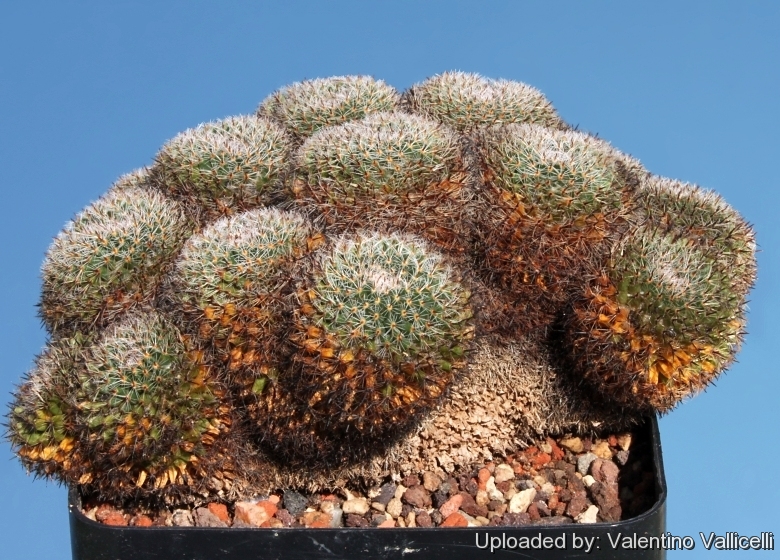
Mammillaria standleyi Photo by: Valentino Vallicelli
Origin and Habitat: Chihuahua, Sinaloa, and Sonora, Mexico.
Altitude: 450 to 1750 metres above sea level.
Habitat and Ecology: The species is widespread and common in the mountains in rocky slopes, in foothill thorn scrubs, in low dry forest and in pine-oak woodlands together with Mammillaria gueldemannianaSN|8836]]SN|8836]]. There are no threats to this species.
Synonyms:
See all synonyms of Mammillaria standleyi
back
Accepted name in llifle Database:Mammillaria standleyi (Britton & Rose) OrcuttCactography 8. 1926 [ cf: Gentry - Publ. Carnegie Inst. Wash. No. 527 (Rio Mayo Pl.) 196 (1942). ]Synonymy: 24
back
Description: Mammillaria standleyiSN|15982]]SN|9417]] is a very variable species with white wool between the tubercles, particularly towards the apex, with white radial spines and brownish centrals. It form a complex of related species along with Mammillaria canelensisSN|15981]]SN|23734]], Mammillaria hertrichianaSN|15985]]SN|32873]], Mammillaria miegiana, Mammillaria montana, Mammillaria movensisSN|32873]]SN|15985]], Mammillaria sonorensisSN|23734]]SN|15981]], Mammillaria tesopacensisSN|9417]]SN|15982]], & several more. It is still unclear whether this variable complex is one or several species. There is so much variation in characters such as spination, woolliness, and flower colour that most authors choose to lump them together until further studies are done.
Habit: Plants usually solitary but at times forming large clumps of nearly 1 meter wide, densely covered
with spines;
Stems: Flattened globose, pale green, up to 10 cm in diameter, occasionally dichotomously branched.
Tubercles: Firm, conical, keeled, with latex.
Axils: More or less woolly when young, later with five to seven white bristles, the flowering and fruiting axils are filled with dense white wool.
Central spines: (2-)4, reddish brown, longer and stouter than the radials, erect, 5-9 mm long.
Radial spines: About 16, slightly spreading, white with darker
tips, 4-8 mm long.
Flowers: Funnelform, purplish red, rather small up to 12 mm long and in diameter. Inner perianth-segments oblong, entire; filaments pale; stigma-lobes green;
Fruits: Club shaped, scarlet, 12-16 mm long.
Seeds: Brown.
Subspecies, varieties, forms and cultivars of plants belonging to the Mammillaria standleyi group
 Mammillaria floresii Fritz Schwarz: usually solitary. Central spines (2-)4, reddish 5-9 mm long. Radials few to 16, 4-8 mm long. Flowers purplish red to 12 mm long. Distribution: San Bernardo, Sonora.
Mammillaria floresii Fritz Schwarz: usually solitary. Central spines (2-)4, reddish 5-9 mm long. Radials few to 16, 4-8 mm long. Flowers purplish red to 12 mm long. Distribution: San Bernardo, Sonora. Mammillaria lindsayi R.T.Craig: forms clumps up to 1 m wide, has white axillary wool and bristles. Radial spines 10-14 white, centrals 2-4 , straight, brown to black, flowers greenish yellow. Distribution: Chihuahua and Sinaloa, Mexico.
Mammillaria lindsayi R.T.Craig: forms clumps up to 1 m wide, has white axillary wool and bristles. Radial spines 10-14 white, centrals 2-4 , straight, brown to black, flowers greenish yellow. Distribution: Chihuahua and Sinaloa, Mexico. Mammillaria lindsayi var. cobrensis Repp.: is distinguishable from the type for the stem that is always solitary with a very woolly apex. The stem is dark green and it lacks of bristles in the woolly tubercles axil. Distribution: Barranca del Cobre, Chihuahua, Mexico.
Mammillaria lindsayi var. cobrensis Repp.: is distinguishable from the type for the stem that is always solitary with a very woolly apex. The stem is dark green and it lacks of bristles in the woolly tubercles axil. Distribution: Barranca del Cobre, Chihuahua, Mexico.- Mammillaria lindsayi var. rubriflora Hils: as the name implies it has reddish flower.
 Mammillaria miegiana W.H.Earle: mostly solitary with stems, densely covered by spines appearing white and producing large, dark reddish-pink flowers with scarlet midveins. Distribution: Northem Sonora.
Mammillaria miegiana W.H.Earle: mostly solitary with stems, densely covered by spines appearing white and producing large, dark reddish-pink flowers with scarlet midveins. Distribution: Northem Sonora. Mammillaria standleyi (Britton & Rose) Orcutt: very variable, with white radial spine, brownish centrals and white wool between the tubercles. Flowers purplish up to 12 mm long. Distribution: Chihuahua, Sinaloa, and Sonora.
Mammillaria standleyi (Britton & Rose) Orcutt: very variable, with white radial spine, brownish centrals and white wool between the tubercles. Flowers purplish up to 12 mm long. Distribution: Chihuahua, Sinaloa, and Sonora.
Bibliography: Major references and further lectures
1) Edward Anderson “The Cactus family” Timber Press, Incorporated, 2001
2) James Cullen, Sabina G. Knees, H. Suzanne Cubey "The European Garden Flora Flowering Plants: A Manual for the Identification of Plants Cultivated in Europe, Both Out-of-Doors and Under Glass" Cambridge University Press, 11/Aug/2011
3) David R Hunt; Nigel P Taylor; Graham Charles; International Cactaceae Systematics Group. "The New Cactus Lexicon" dh books, 2006
4) N.L.Britton and J.N.Rose "The cactaceae" Volume IV 1923
5) Burquez Montijo, A. & Felger, R.S. 2013. Mammillaria standleyi. In: IUCN 2013. "IUCN Red List of Threatened Species." Version 2013.2. <www.iucnredlist.org>. Downloaded on 12 January 2014.
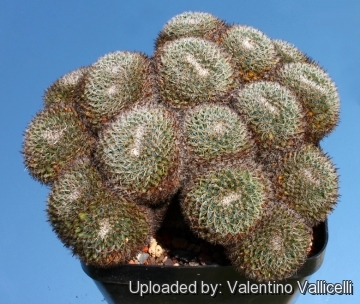 Mammillaria standleyi Photo by: Valentino Vallicelli
Mammillaria standleyi Photo by: Valentino Vallicelli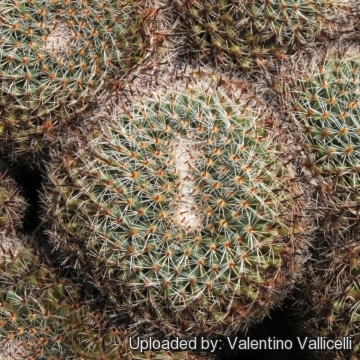 Mammillaria standleyi Photo by: Valentino Vallicelli
Mammillaria standleyi Photo by: Valentino Vallicelli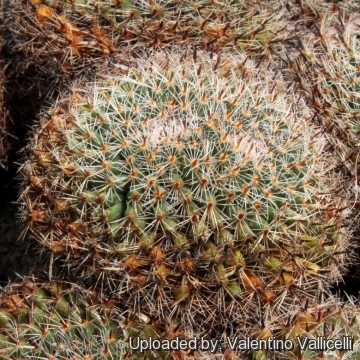 Mammillaria standleyi Photo by: Valentino Vallicelli
Mammillaria standleyi Photo by: Valentino Vallicelli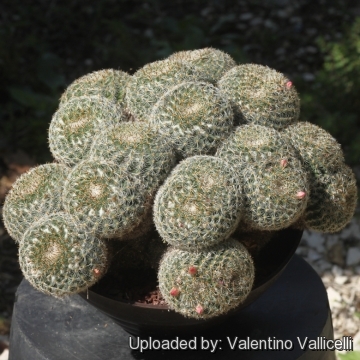 Mammillaria standleyi Photo by: Valentino Vallicelli
Mammillaria standleyi Photo by: Valentino Vallicelli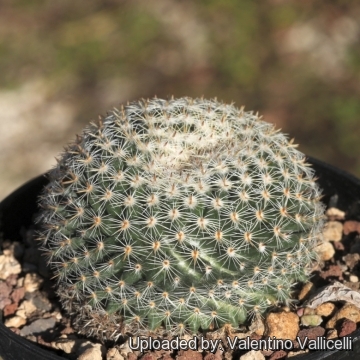 Mammillaria standleyi Photo by: Valentino Vallicelli
Mammillaria standleyi Photo by: Valentino VallicelliSend a photo of this plant.The gallery now contains thousands of pictures, however it is possible to do even more. We are, of course, seeking photos of species not yet shown in the gallery but not only that, we are also looking for better pictures than those already present.
Read More... Cultivation and Propagation: It is relatively rare in cultivation but it is not particularly difficult to grow.
Growth rate: Slow-growing.
Soil: Grow it in an open sandy-gritty cactus compost.
Pots: It needs a relatively shallow pot to accommodate its fibrous roots and provide a very good drainage. It may stay in the same pot for many years.
Watering: Water in moderation, it prefer a completely dry place during winter. Mature individuals easily rot and die especially after planting so be extremely cautious with watering. Keep dry in winter or when night temperatures remain below 10° C. Water it less than average if in bigger pots.
Special need: Provide very good ventilation. Nearly all problems occur as a result of overwatering and poor ventilation, especially when weather conditions are dull and cool or very humid.
Fertilization: Feed them once during the growing season with a fertilizer specifically formulated for cactus and succulents (high potash fertilizer with a dilute low nitrogen), including all micro nutrients and trace elements diluted to ½ the strength recommended on the label. They thrive in poor soils and need a limited supplies of fertilizer to avoid the plants developing excess vegetation, which is easily attacked by fungal diseases.
Exposure: It will do its best with lots of sun and become stressed with inadequate light which could result in poor growth and unnatural shape.
Hardiness: It likes warmth (recommended minimum winter temperature 5° C) however plants kept perfectly dry can can survive low temperatures, approx. -5°, but for safe cultivation it is best to avoid freezing temperatures.
Use: This is a good pot plant suited for a non heated green house. It can be also cultivated outdoors in raised beds, terraces if sheltered from winter rain. This cactus continues to be, a particular prize among collectors
Pests & diseases: These cacti may be attractive to a variety of insects, but plants in good condition should be nearly pest-free, particularly if they are grown in a mineral potting-mix, with good exposure and ventilation. Nonetheless, there are several pests to watch for:
- Red spiders: Red spiders may be effectively rubbed up by misting the plants from above.
- Mealy bugs: Mealy bugs occasionally they develop aerial into the new leaves and flowers with disfiguring results, but the worst types develop underground on the roots and are invisible except by their effects.
- Rot: Rot is only a minor problem if the plants are watered and “aired” correctly. If they are not, fungicides won't help all that much.
Propagation: Seeds. The seeds can be sown in pots of fine, well-drained sandy soil, any time during the spring when temperatures are warm. Cover the seeds with a fine layer of grit and water from below with a fungicide to prevent damping off. For the 1-2 weeks cover the pots with a sheet of glass/clear perspex to keep the humidity levels high. Remove the glass and replace it with light shade-cloth and mist once or twice a day for the next two weeks after which most seeds should have germinated. From then on mistings can be reduced to every second and then every third day as the little plants grow.















